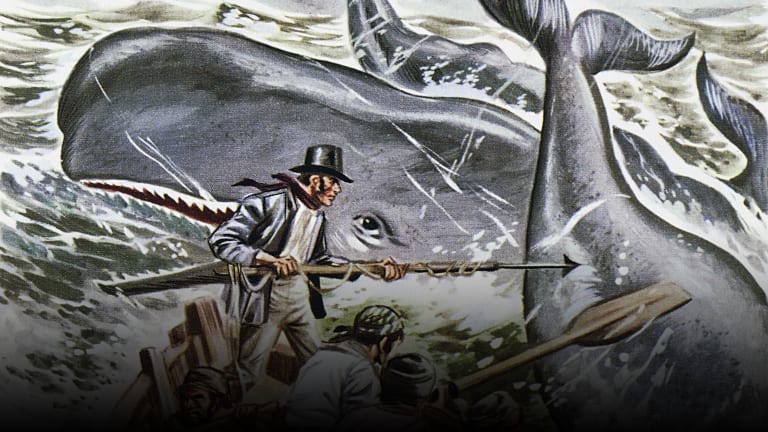
FAQ About Moby Dick

How does Melville use language and style in "Moby-Dick"?
Melville's use of language and style in "Moby-Dick" is one of the most distinctive and influential aspects of the novel. He uses a range of stylistic techniques, from vivid description and metaphor to complex symbolism and philosophical inquiry, to create a unique and multi-layered narrative.
One of Melville's most notable stylistic choices in "Moby-Dick" is his use of a complex and varied narrative structure. The novel is not told from a single point of view but is rather a mosaic of different perspectives and narrative styles, including first-person narration, dramatic scenes, philosophical meditations, and historical accounts. This creates a rich and multi-dimensional picture of the world of the novel and allows Melville to explore a range of themes and ideas.
Melville also uses language in a highly creative and inventive way, often creating new words or using archaic or technical language to evoke the world of the whaling industry. He uses metaphor and symbolism to explore complex philosophical ideas, such as the nature of good and evil, the relationship between humans and nature, and the search for meaning in a seemingly chaotic world. The result is a novel that is both highly literary and deeply engaged with the social and cultural context of its time.
In summary, Melville's use of language and style in "Moby-Dick" is an essential part of the novel's power and influence. His innovative narrative techniques and poetic language create a complex and multi-layered portrait of the world of the novel and explore a range of themes and ideas that continue to resonate with readers today.
